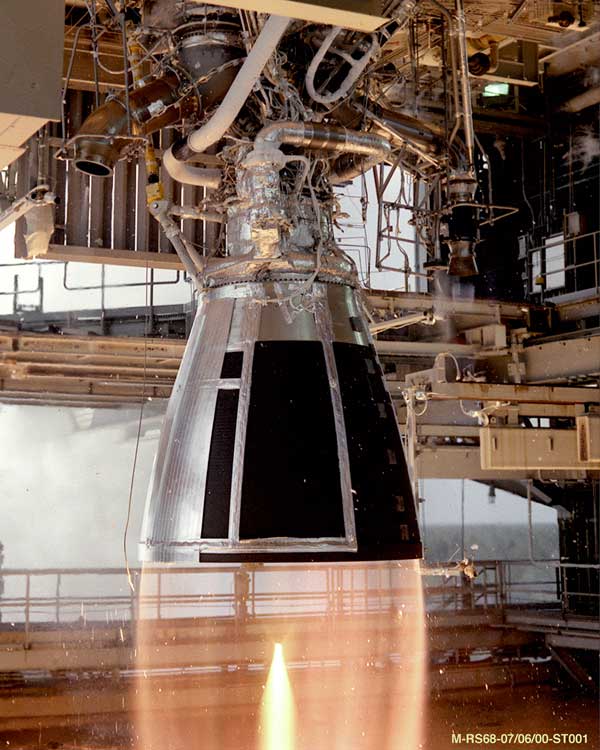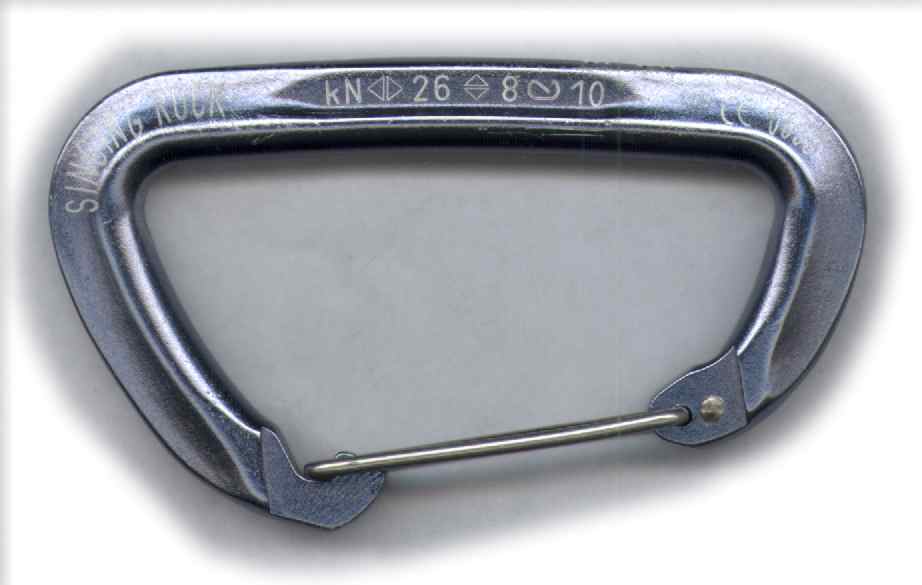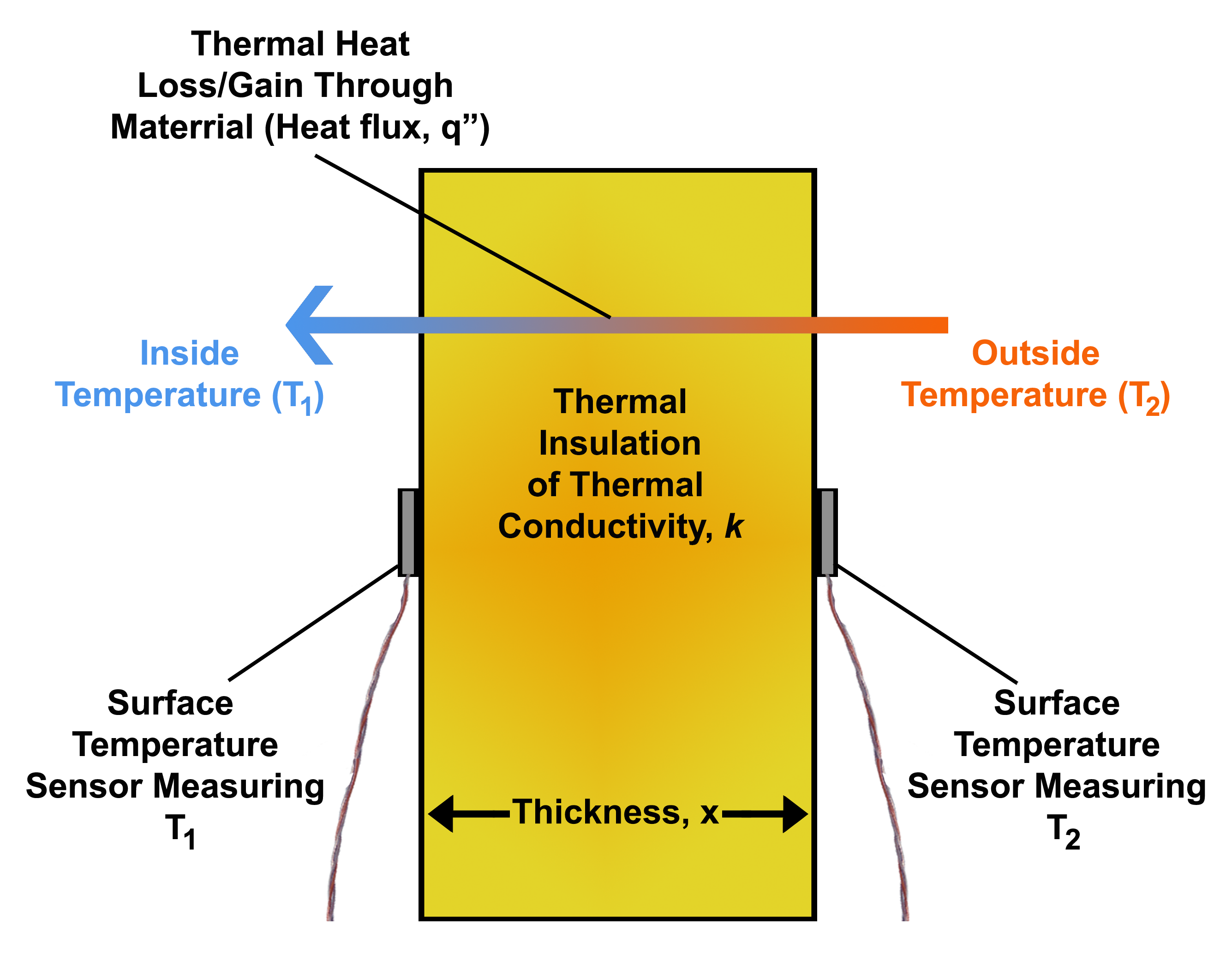|
Regenerative Cooling (rocketry)
In rocket engine design, regenerative cooling is a configuration in which some or all of the propellant is passed through tubes, channels, or in a jacket around the combustion chamber or nozzle to cool the engine. This is effective because the propellants are often cryogenic. The heated propellant is then fed into a special gas-generator or injected directly into the main combustion chamber. History In 1857 Carl Wilhelm Siemens introduced the concept of regenerative cooling. On 10 May 1898, James Dewar used regenerative cooling to become the first to statically liquefy hydrogen. The concept of regenerative cooling was also mentioned in 1903 in an article by Konstantin Tsiolkovsky. Robert Goddard built the first regeneratively cooled engine in 1923, but rejected the scheme as too complex. A regeneratively cooled engine was built by the Italian researcher, Gaetano Arturo Crocco in 1930. The first Soviet engines to employ the technique were Fridrikh Tsander's OR-2 tested in Mar ... [...More Info...] [...Related Items...] OR: [Wikipedia] [Google] [Baidu] |
Rocket Engine
A rocket engine is a reaction engine, producing thrust in accordance with Newton's third law by ejecting reaction mass rearward, usually a high-speed Jet (fluid), jet of high-temperature gas produced by the combustion of rocket propellants stored inside the rocket. However, non-combusting forms such as cold gas thrusters and nuclear thermal rockets also exist. Rocket vehicles carry their own oxidiser, unlike most combustion engines, so rocket engines can be used in a vacuum, and they can achieve great speed, beyond escape velocity. Vehicles commonly propelled by rocket engines include missiles, Rocket-assisted projectile, artillery shells, ballistic missiles and rockets of any size, from tiny Rocket (firework), fireworks to Rocket (weapon), man-sized weapons to huge Space vehicle, spaceships. Compared to other types of jet engine, rocket engines are the lightest and have the highest thrust, but are the least propellant-efficient (they have the lowest specific impulse). The ideal ... [...More Info...] [...Related Items...] OR: [Wikipedia] [Google] [Baidu] |
Kilonewton
The newton (symbol: N) is the unit of force in the International System of Units (SI). Expressed in terms of SI base units, it is 1 kg⋅m/s2, the force that accelerates a mass of one kilogram at one metre per second squared. The unit is named after Isaac Newton in recognition of his work on classical mechanics, specifically his second law of motion. Definition A newton is defined as 1 kg⋅m/s2 (it is a named derived unit defined in terms of the SI base units). One newton is, therefore, the force needed to accelerate one kilogram of mass at the rate of one metre per second squared in the direction of the applied force. The units "metre per second squared" can be understood as measuring a rate of change in velocity per unit of time, i.e. an increase in velocity by one metre per second every second. In 1946, the General Conference on Weights and Measures (CGPM) Resolution 2 standardized the unit of force in the MKS system of units to be the amount needed t ... [...More Info...] [...Related Items...] OR: [Wikipedia] [Google] [Baidu] |
Characteristic Velocity
Characteristic velocity or c^*, or C-star is a measure of the combustion performance of a rocket engine independent of nozzle performance, and is used to compare different propellants and propulsion systems. It is independent of the nozzle, making it a useful metric for evaluating propellant combustion alone. c* should not be confused with ''c'', which is the effective exhaust velocity related to the specific impulse by: I_s = \frac. Specific impulse and effective exhaust velocity are dependent on the nozzle design unlike the characteristic velocity, explaining why C-star is an important value when comparing different propulsion system efficiencies. c* can be useful when comparing actual combustion performance to theoretical performance in order to determine how completely chemical energy release occurred, or the combustion efficiency. This is known as ''c*-efficiency, or n_v'', and is calculated by dividing c^*_ with c^*_. Standard values for ''n_v range from 0.85 to 1.03.'' Formu ... [...More Info...] [...Related Items...] OR: [Wikipedia] [Google] [Baidu] |
Prandtl Number
The Prandtl number (Pr) or Prandtl group is a dimensionless number, named after the German physicist Ludwig Prandtl, defined as the ratio of momentum diffusivity to thermal diffusivity. The Prandtl number is given as:where: * \nu : momentum diffusivity ( kinematic viscosity), \nu = \mu/\rho, ( SI units: m2/s) * \alpha : thermal diffusivity, \alpha = k/(\rho c_p), (SI units: m2/s) * \mu : dynamic viscosity, (SI units: Pa s = N s/m2) * k : thermal conductivity, (SI units: W/(m·K)) * c_p : specific heat, (SI units: J/(kg·K)) * \rho : density, (SI units: kg/m3). Note that whereas the Reynolds number and Grashof number are subscripted with a scale variable, the Prandtl number contains no such length scale and is dependent only on the fluid and the fluid state. The Prandtl number is often found in property tables alongside other properties such as viscosity and thermal conductivity. The mass transfer analog of the Prandtl number is the Schmidt number and the ratio of the Pran ... [...More Info...] [...Related Items...] OR: [Wikipedia] [Google] [Baidu] |
Specific Heat Capacity
In thermodynamics, the specific heat capacity (symbol ) of a substance is the amount of heat that must be added to one unit of mass of the substance in order to cause an increase of one unit in temperature. It is also referred to as massic heat capacity or as the specific heat. More formally it is the heat capacity of a sample of the substance divided by the mass of the sample. The SI unit of specific heat capacity is joule per kelvin per kilogram, J⋅kg−1⋅K−1. For example, the heat required to raise the temperature of of water by is , so the specific heat capacity of water is . Specific heat capacity often varies with temperature, and is different for each state of matter. Liquid water has one of the highest specific heat capacities among common substances, about at 20 °C; but that of ice, just below 0 °C, is only . The specific heat capacities of iron, granite, and hydrogen gas are about 449 J⋅kg−1⋅K−1, 790 J⋅kg−1⋅K−1, and 143 ... [...More Info...] [...Related Items...] OR: [Wikipedia] [Google] [Baidu] |
Viscosity
Viscosity is a measure of a fluid's rate-dependent drag (physics), resistance to a change in shape or to movement of its neighboring portions relative to one another. For liquids, it corresponds to the informal concept of ''thickness''; for example, syrup has a higher viscosity than water. Viscosity is defined scientifically as a force multiplied by a time divided by an area. Thus its SI units are newton-seconds per metre squared, or pascal-seconds. Viscosity quantifies the internal friction, frictional force between adjacent layers of fluid that are in relative motion. For instance, when a viscous fluid is forced through a tube, it flows more quickly near the tube's center line than near its walls. Experiments show that some stress (physics), stress (such as a pressure difference between the two ends of the tube) is needed to sustain the flow. This is because a force is required to overcome the friction between the layers of the fluid which are in relative motion. For a tube ... [...More Info...] [...Related Items...] OR: [Wikipedia] [Google] [Baidu] |
Heat Transfer Coefficient
In thermodynamics, the heat transfer coefficient or film coefficient, or film effectiveness, is the Proportional (mathematics), proportionality constant between the heat flux and the thermodynamic driving force for the Heat transfer, flow of heat (i.e., the Temperature gradient, temperature difference, ). It is used to calculate heat transfer between components of a system; such as by convection between a fluid and a solid. The heat transfer coefficient has SI units in Watt, watts per square meter per kelvin (W/(m2K)). The overall heat transfer rate for combined modes is usually expressed in terms of an overall Thermal conduction, conductance or heat transfer coefficient, . Upon reaching a steady state of flow, the heat transfer rate is: :\dot=hA(T_2-T_1) where (in SI units): : \dot: Heat transfer rate (W) : h: Heat transfer coefficient (W/m2K) : A: surface area where the heat transfer takes place (m2) : T_2: temperature of the surrounding fluid (K) : T_1: temperature of the s ... [...More Info...] [...Related Items...] OR: [Wikipedia] [Google] [Baidu] |
Heat Flux
In physics and engineering, heat flux or thermal flux, sometimes also referred to as heat flux density, heat-flow density or heat-flow rate intensity, is a flow of energy per unit area per unit time (physics), time. Its SI units are watts per square metre (W/m2). It has both a direction and a magnitude, and so it is a Vector (geometric), vector quantity. To define the heat flux at a certain point in space, one takes the Limiting case (mathematics), limiting case where the size of the surface becomes infinitesimally small. Heat flux is often denoted \vec_\mathrm, the subscript specifying ''heat'' flux, as opposed to ''Mass flux, mass'' or Transport phenomena, ''momentum'' flux. Heat conduction#Fourier's law, Fourier's law is an important application of these concepts. Fourier's law For most solids in usual conditions, heat is transported mainly by thermal conduction, conduction and the heat flux is adequately described by Fourier's law. Fourier's law in one dimension \phi ... [...More Info...] [...Related Items...] OR: [Wikipedia] [Google] [Baidu] |
Reaction Motors
Reaction Motors, Inc. (RMI) was an early American maker of liquid-fueled rocket engines, located in New Jersey. RMI engines with thrust powered the Bell X-1 rocket aircraft that first broke the sound barrier in 1947, and later aircraft such the X-1A, X-1E, and the Douglas D-558-2 Skyrocket. A thrust RMI engine also powered the Viking research rocket, the first large liquid-fueled US high-altitude rocket. RMI was merged with Thiokol in 1958, where it produced the XLR-99 engine that powered the X-15 rocket aircraft. History Formation and the sound barrier Reaction Motors, Inc. began operation as early as 1930 through the work of then American Interplanetary Society members Lovell Lawrence, George Edward Pendray, Hugh Pierce, and engineer John Shesta. This group quickly moved from science fiction discussions to practical rocketry. Pendray contributed heavily to their early designs using knowledge acquired from a trip to Berlin in 1931. In 1938, Princeton University ... [...More Info...] [...Related Items...] OR: [Wikipedia] [Google] [Baidu] |
RS-68
The RS-68 (Rocket System-68) was a liquid-fuel rocket engine that used liquid hydrogen (LH2) and liquid oxygen (LOX) as propellants in a gas-generator cycle. It was the largest hydrogen-fueled rocket engine ever flown. Designed and manufactured in the United States by Rocketdyne (later Pratt & Whitney Rocketdyne and Aerojet Rocketdyne). Development started in the 1990s with the goal of producing a simpler, less costly, heavy-lift engine for the Delta IV launch system. Two versions of the engine have been produced: the original RS-68 and the improved RS-68A. A third version, the RS-68B, was planned for the National Aeronautics and Space Administration's (NASA) Ares V rocket before the cancellation of the rocket and the Constellation Program in 2010. Design and development One of the main goals of the RS-68 program was to produce a simple engine that would be cost-effective when used for a single launch. To achieve this, the RS-68 has 80% fewer parts than the multi-launch RS- ... [...More Info...] [...Related Items...] OR: [Wikipedia] [Google] [Baidu] |
Brazing
Brazing is a metal-joining process in which two or more metal items are joined by melting and flowing a filler metal into the joint, with the filler metal having a lower melting point than the adjoining metal. Brazing differs from welding in that it does not involve melting the work pieces. Brazing differs from soldering through the use of a higher temperature and much more closely fitted parts. During the brazing process, the filler metal flows into the gap between close-fitting parts by capillary action. The filler metal is brought slightly above its melting ( liquidus) temperature while protected by a suitable atmosphere, usually a flux. It then flows over the base metal (in a process known as wetting) and is then cooled to join the work pieces together. Brazing joins the same or different metals with considerable strength. Process Brazing has many advantages over other metal-joining techniques, such as welding. Since brazing does not melt the base metal of the joi ... [...More Info...] [...Related Items...] OR: [Wikipedia] [Google] [Baidu] |
Aleksei Mihailovich Isaev
Aleksei Mikhailovich Isaev (also Isayev; Russian: Алексе́й Миха́йлович Иса́ев; October 24, 1908, in Saint Petersburg – June 10, 1971, in Moscow) was a Soviet engineer in the Soviet space program, working on rocket combustion and propellant. Aleksei Isaev began work under Leonid Dushkin during World War II, on an experimental rocket-powered interceptor plane, the BI-1. In 1944 he formed his own design bureau to engineer liquid-propellant engines. After abandoning the heavy, complex and undercooled German engine designs, Russia's principal engine designer Valentin Glushko turned to Isaev's innovations: thin-walled copper combustion chambers backed by steel support, anti-oscillation baffle to prevent chugging, and the flat injector plate with mixing-swirling injectors. The latter was an enormous simplification of the "plumbing nightmare" of the V-2 engine, because it avoided the need for separate fuel lines to each sprayer. Staged combustion (� ... [...More Info...] [...Related Items...] OR: [Wikipedia] [Google] [Baidu] |






